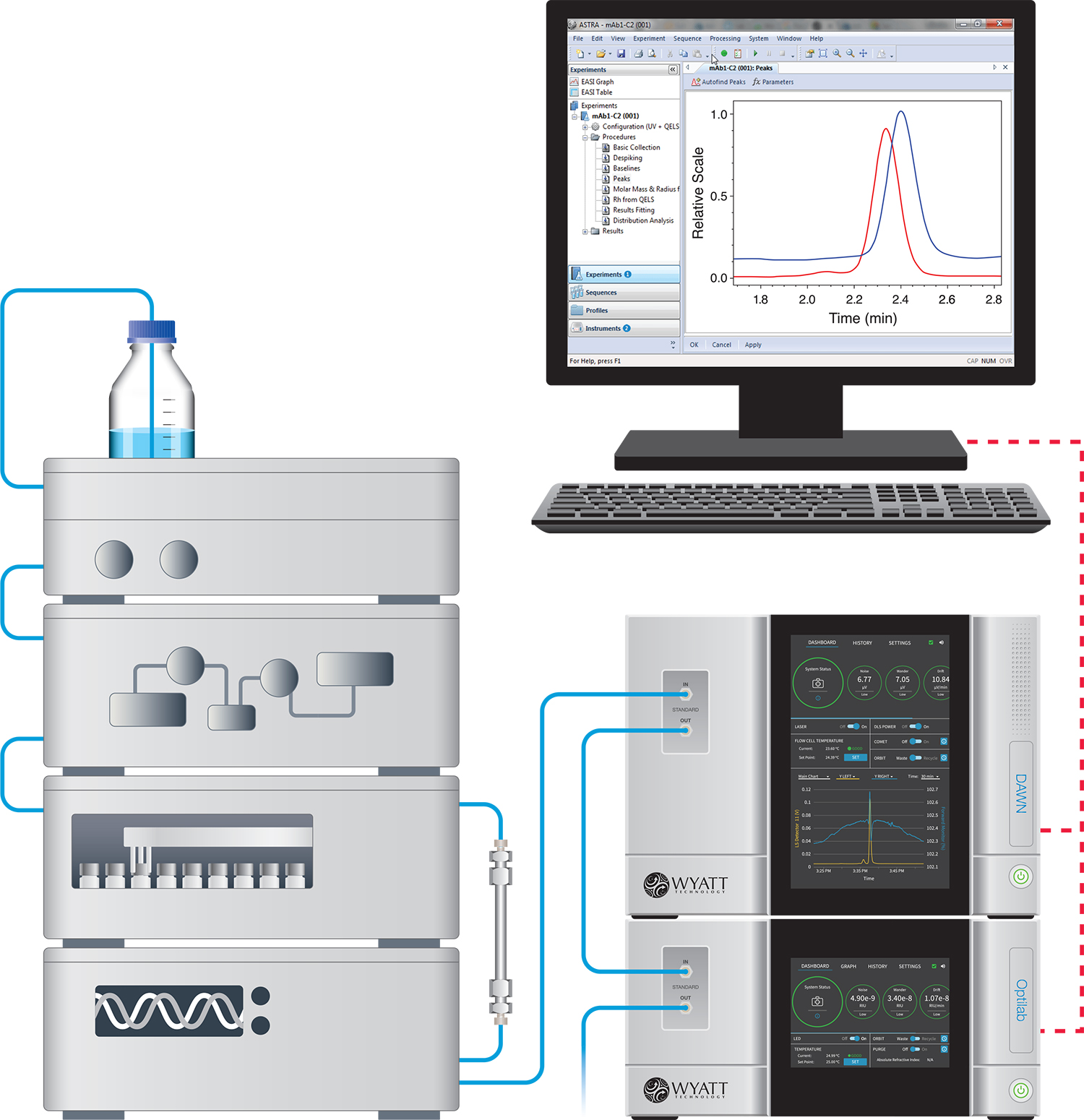Understanding Light Scattering and Chromatography Mode
 A chromatography-mode light scattering experiment couples a Multi-Angle static Light Scattering (MALS) detector, such as the DAWN™ or miniDAWN™, with a fractionation device that separates macromolecules based on their physical properties. The most common fractionation method used with MALS is HPLC size exclusion chromatography (SEC). SEC-MALS provides accurate distributions of molar mass and size (root mean square radius Rg), as opposed to:
A chromatography-mode light scattering experiment couples a Multi-Angle static Light Scattering (MALS) detector, such as the DAWN™ or miniDAWN™, with a fractionation device that separates macromolecules based on their physical properties. The most common fractionation method used with MALS is HPLC size exclusion chromatography (SEC). SEC-MALS provides accurate distributions of molar mass and size (root mean square radius Rg), as opposed to:
- Standard SEC, which depends on column calibration by reference standards.
- Batch (cuvette) mode MALS, where the measured quantities are averaged over all masses and sizes present in the sample.
This type of arrangement has many advantages over traditional column calibration methods. Since the light scattering and concentration are measured for each eluting fraction, the molar mass and size can be determined independently of the elution position. This is particularly important for species with non-globular shapes or that interact with a SEC column; such species typically do not elute in a manner that might be described by a set of column calibration standards.
For light scattering in chromatography mode, however, non-standard column interaction is no problem, since the absolute molar mass and size are determined for each eluting fraction. Since it is not necessary to make any assumptions inherent with the use of calibration standards, it is possible to completely characterize the distributions derived from separation techniques such as ion exchange or reverse phase chromatography. There are no means to calibrate these techniques by traditional methods.
Another powerful separation technique often used in conjunction with MALS is Field-Flow Fractionation (FFF) which performs separations over a very wide dynamic range. FFF works without a packed column, by means of a channel. The Eclipse™ controls the flows precisely to obtain versatile and robust separations. FFF-MALS characterizes solutes and suspensions from small macromolecules up to micron-sized nanoparticles.
In a typical SEC-MALS or FFF-MALS measurement, the light scattering detector and a concentration detector are connected in series after the fractionation device. The concentration detector is usually a differential refractometer (dRI) such as an Optilab® or an ultraviolet absorption (UV) detector.
In addition to measuring molar masses and root-mean-square radii via MALS, it may be desirable to determine hydrodynamic radi as well. This is accomplished by adding to the MALS detector a dynamic light scattering (DLS) detection module such as a WyattQELS or the DynaPro® NanoStar® external fiber for measuring hydrodynamic radii Rh. SEC-DLS and FFF-DLS size measurements range from < 1 nm up to > 250 nm.
Alternatively, a differential viscometer such as the ViscoStar® may be connected in series with the MALS and dRI detectors to determine intrinsic viscosity, which can also be related to Rh. The relationship between molar mass and size as determined by DLS or viscometry is indicative of molecular conformation.
